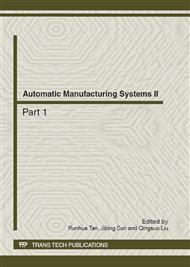p.625
p.631
p.635
p.639
p.643
p.647
p.653
p.659
p.663
An Improved Clustering Algorithm Based on Coverage Area for Wireless Sensor Networks
Abstract:
Clustering is an effective topology control approach in wireless sensor networks, which can increase network scalability and lifetime. A clustering algorithm based on the total number of neighbor nodes is proposed to maximize the lifetime of the network. The larger amount of neighbor nodes, the more chance a node has to be selected as a cluster head. Therefore, it can ensure the minimum cluster heads in the whole network. By closing the communication parts of cluster head to avoid selecting as cluster head in next epoch, the energy of the whole system is consumed symmetrically. The simulations demonstrate the effectiveness of the algorithm.
Info:
Periodical:
Pages:
643-646
Citation:
Online since:
June 2012
Authors:
Price:
Сopyright:
© 2012 Trans Tech Publications Ltd. All Rights Reserved
Share:
Citation:


